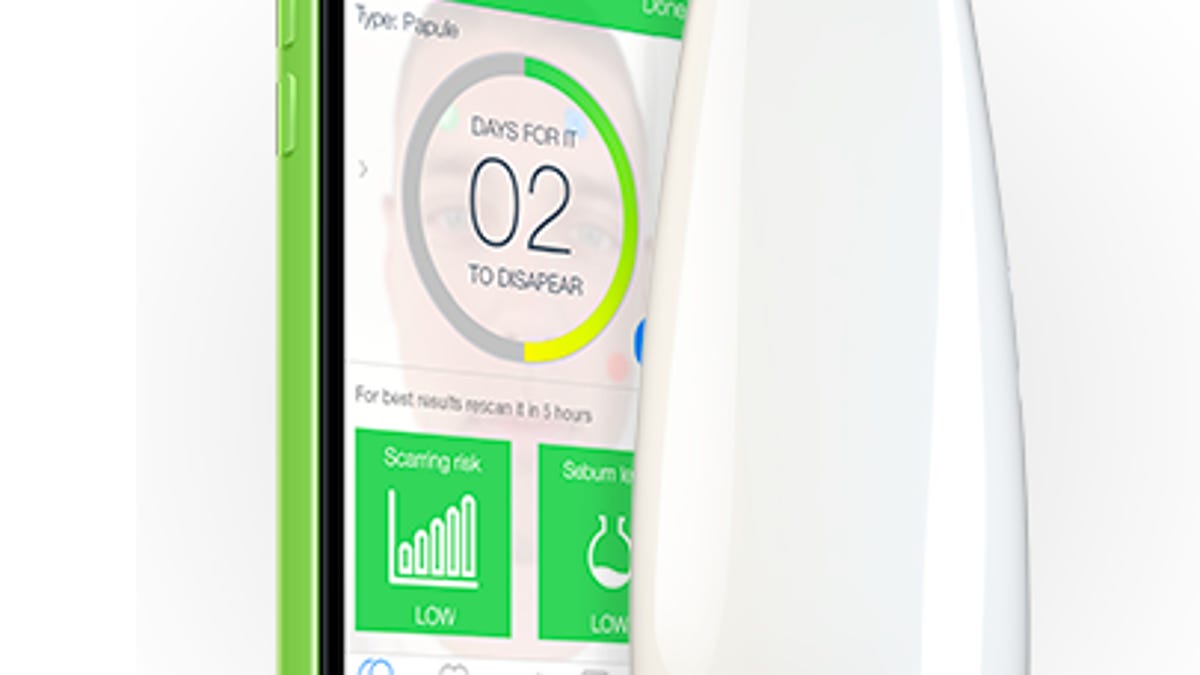What's a zit's life span? ScanZ aims to help clear that up
Device takes transdermal images, which are sent to a smartphone app and then run through algorithms developed at the Mayo Clinic that help predict when zits are likely to disappear.

Zits. It's easy to forget how devastating their sudden emergence -- always at the most inopportune moments -- can be. But surely everyone remembers at least one time when a zit was, at least for a day, the single most mortifying thing that ever happened.
ScanZ to the rescue! The patented imaging device developed by mySkin connects to a smartphone to help track the oh-so-unpredictable life of acne.
The device projects light of different wavelengths onto the skin to take transdermal images of the acne, sends that data to a connected smartphone, and the SmartZ app for iPhone uses algorithms developed at the Mayo Clinic to re-create a dermatologist's likely treatment recommendations. The app not only tracks the user's overall acne history, but also lifestyle habits that pertain to skin care and health, and based on these data points predicts when zits are likely to appear and -- mercifully -- disappear.
The Jersey City company unveiled ScanZ last week at TechCrunch Disrupt Europe 2013 and just launched an Indiegogo campaign to finish product development. Set to retail for $249, the device is clearly being marketed to well-heeled teens and the parents who pay their dermatology bills. Check out more below:

